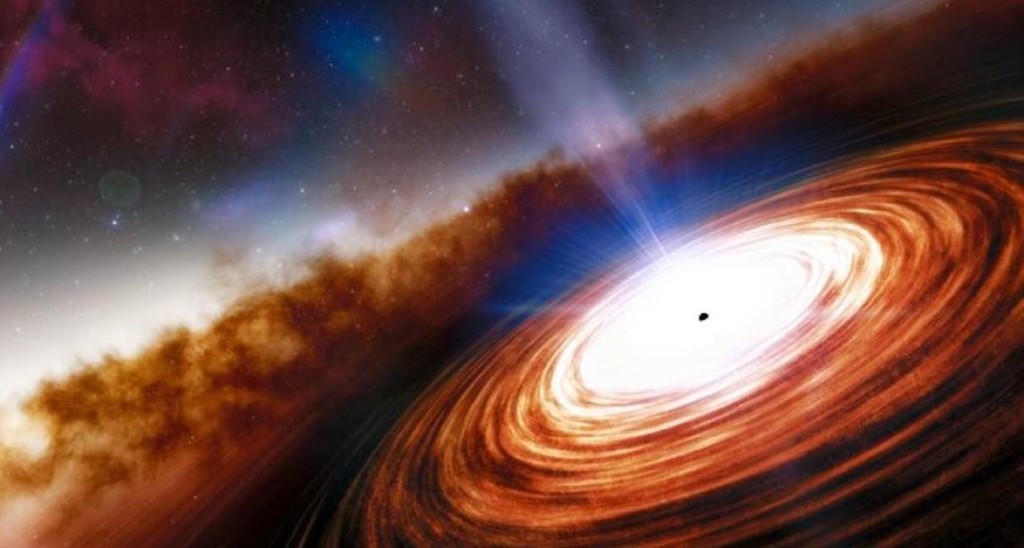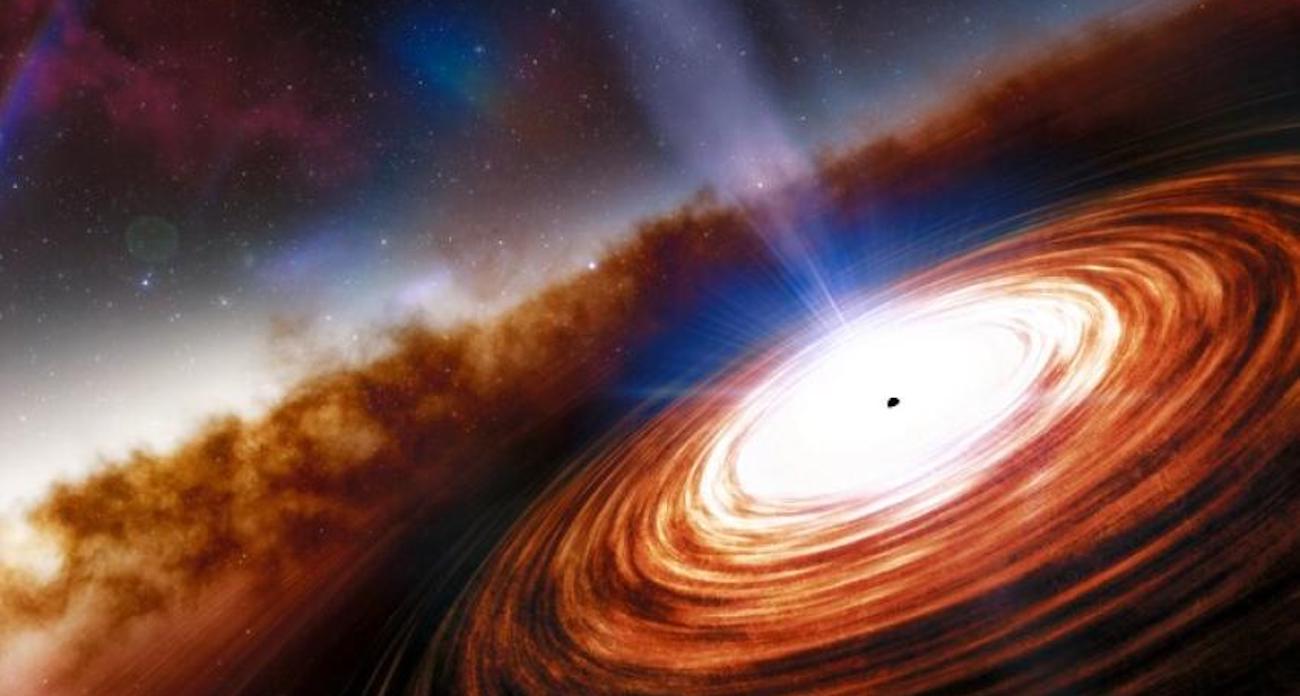
Jets of light 100,000 billion times brighter than the sun have been captured by astronomers observing a quasar—the most powerful object in the universe.
The beams are at the center of a galaxy 9.6 billion light years away—meaning we are seeing them as they were then.
They were triggered when clouds of gas fell into a supermassive black hole.
Named J1144, the quasar is much closer to Earth than other sources of the same luminosity, shedding light on the black hole and its surrounding environment.
Located between the constellations of Centaurus and Hydra, observations of the galax showed some gas being ejected in the form of extremely powerful winds propelled by large amounts of energy.
“We were very surprised that no prior X-ray observatory has ever observed this source, despite its extreme power,” said lead author Dr. Elias Kammoun, of the Max Planck Institute for Extraterrestrial Physics in Germany.
For this study, researchers combined observations from several space-based observatories—the eROSITA instrument, the ESA XMM-Newton observatory, NASA’s Nuclear Spectroscopic Telescope Array (NuSTAR), and NASA’s Neil Gehrels Swift observatory—in order to measure the temperature of the X-rays being emitted from the giant quasar.
They calculated it at around 350 million Kelvin, more than 60,000 times hotter than the surface of the sun.
The mass of the black hole at the quasar’s center is around 10 billion times the mass of Earth’s sun—and it’s rapidly growing as the black hole feed on gases and particles around them.
Similar quasars are usually located much further away, so they appear much fainter. Astronomers are seeing those as they were when the Universe was only 2-3 billion years old.
“J1144 is a very rare source as it is so luminous and much closer to Earth, although still at a huge distance, giving us a unique glimpse of what such powerful quasars look like,” said Dr. Kammoun.
CHECK OUT: Black Hole Found Shredding a Nearby Star into ‘Spaghetti’ is Pivotal Moment for Astronomers
The study in Monthly Notices of the Royal Astronomical Society improves understanding of the inner workings of quasars.
They outshine even the hottest burning stars—emitting vast amounts of electromagnetic radiation observable in radio, infrared, visible, ultraviolet and X-ray wavelengths. J1144 was initially observed in visible wavelengths in 2022 by the SkyMapper Southern Survey (SMSS).
The X-ray light varied on a time scale of a few days, which is not usually seen in quasars with black holes as large as the one residing in J1144. The typical timescale of variability for a black hole of this size would be on the order of months or even years.
“A new monitoring campaign of this source will start in June this year, which may reveal more surprises from this unique source,” says Kammoun.
STREAM Some AWE to Your Geek Squad on Social Media…




















